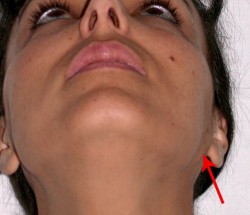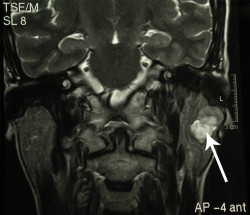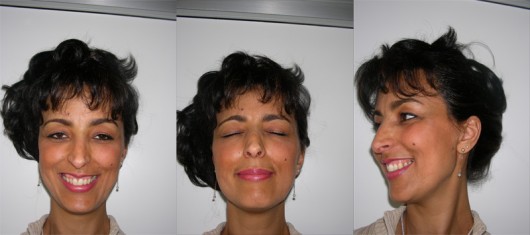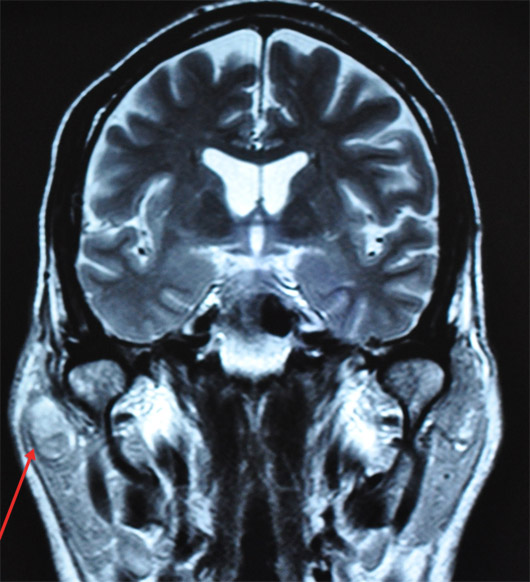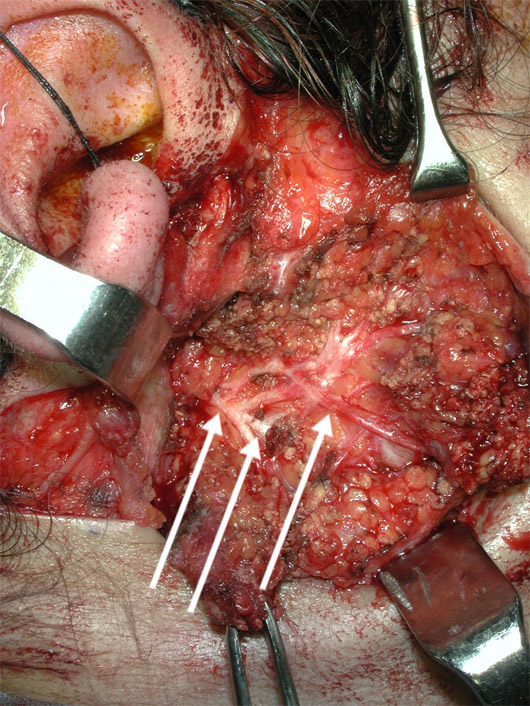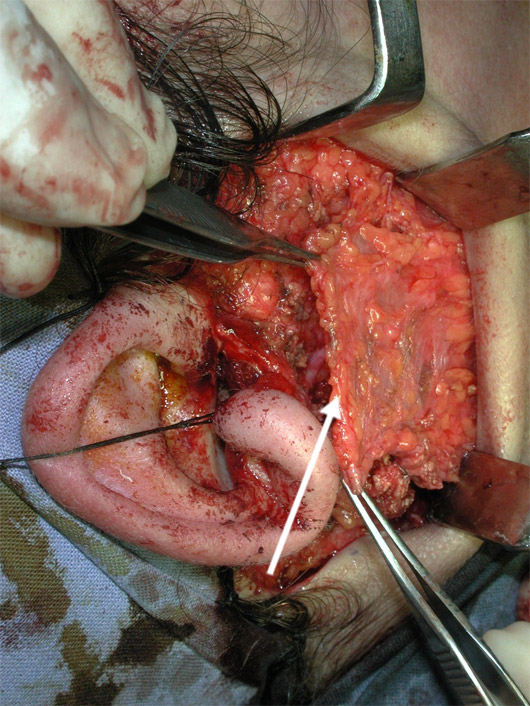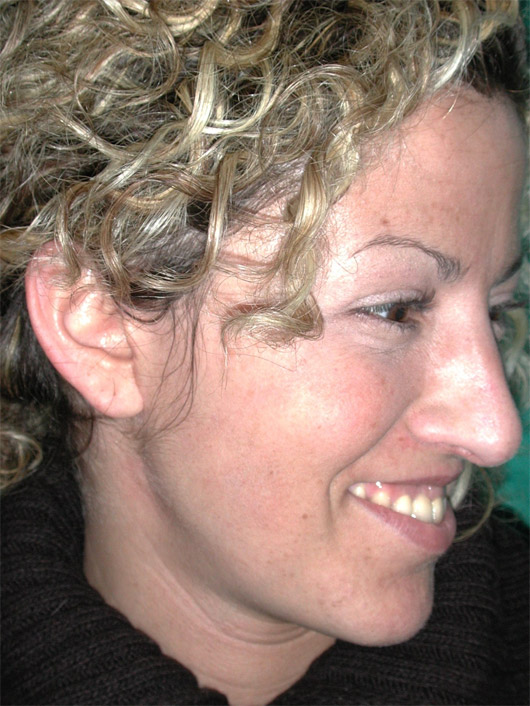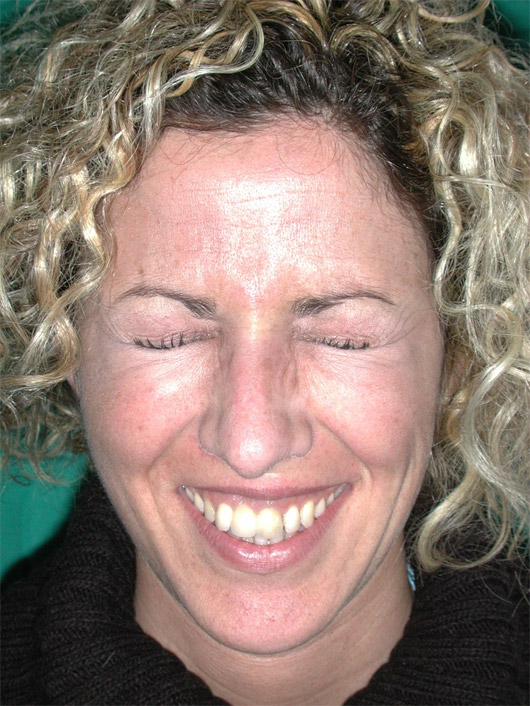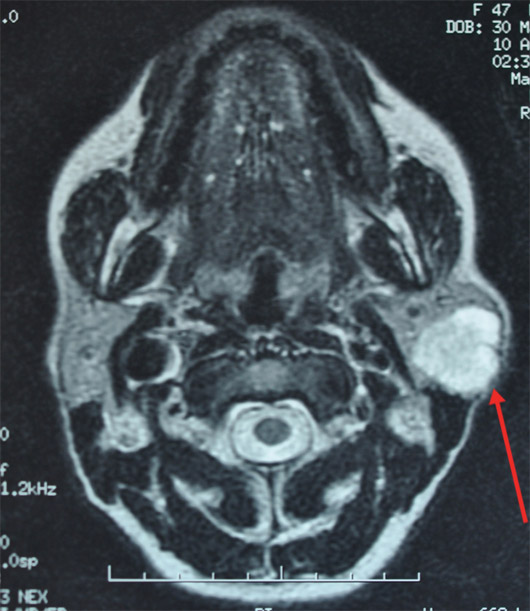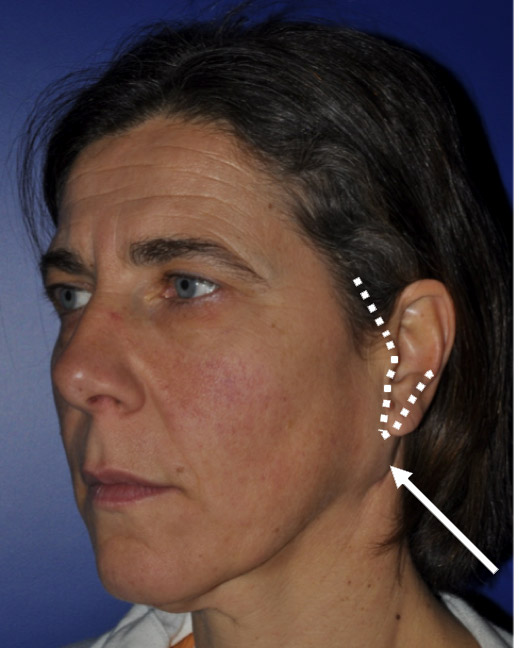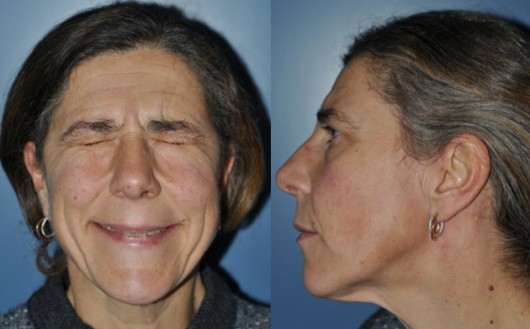Parotid surgery
The specific function of the parotid gland is to produce saliva to lubricate the oral cavity, and to aid chewing and swallowing food. Inside the parotid gland, the facial nerve divides into several tiny branches, forming a network. The facial nerve also innervates the mimetic muscles of the face, so its lesioning leads to paralysis of the face. Thus, any surgery of this organ is considered particularly delicate.
The parotid gland may be affected by numerous pathological processes that need to be treated surgically, among which the most frequent is the development of a benign tumour: a pleomorphic adenoma.
Surgical excision of a pleomorphic adenoma is essential because, over time, it may reach a large size and transform into a malignant variant. Using an operative microscope minimises the possibility of relapse and helps to ensure conservation of the facial nerve and its branches.
The precise removal of the lesion and sparing the tiny facial nerve branches are the goals of surgery; other details ensure an optimal result.
In particular, for aesthetic purposes, it is important to carry out:
and
For functional purposes it is important:
and
Patient with pleomorphic adenoma of the left parotid gland (arrows).
Surgical details, as a face-lifting incision, use of an operating microscope to spare the facial nerve, and transposition of a temporalis fascia flap, allow maintaining full aesthetics and functionality in the operated region.
Clinical case
WARNING! SURGICAL IMAGES WILL BE SHOWN IF YOU CLICK HERE


